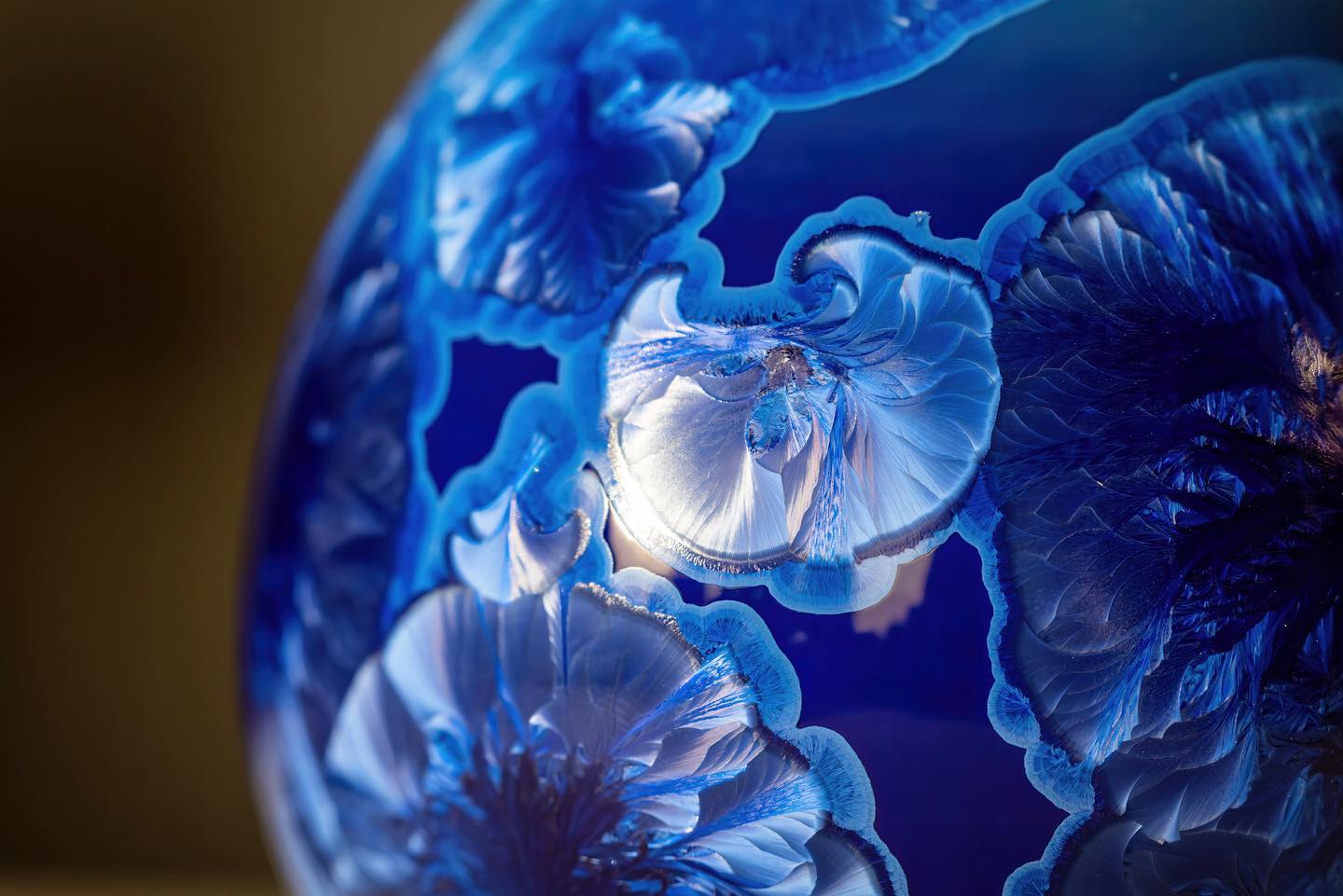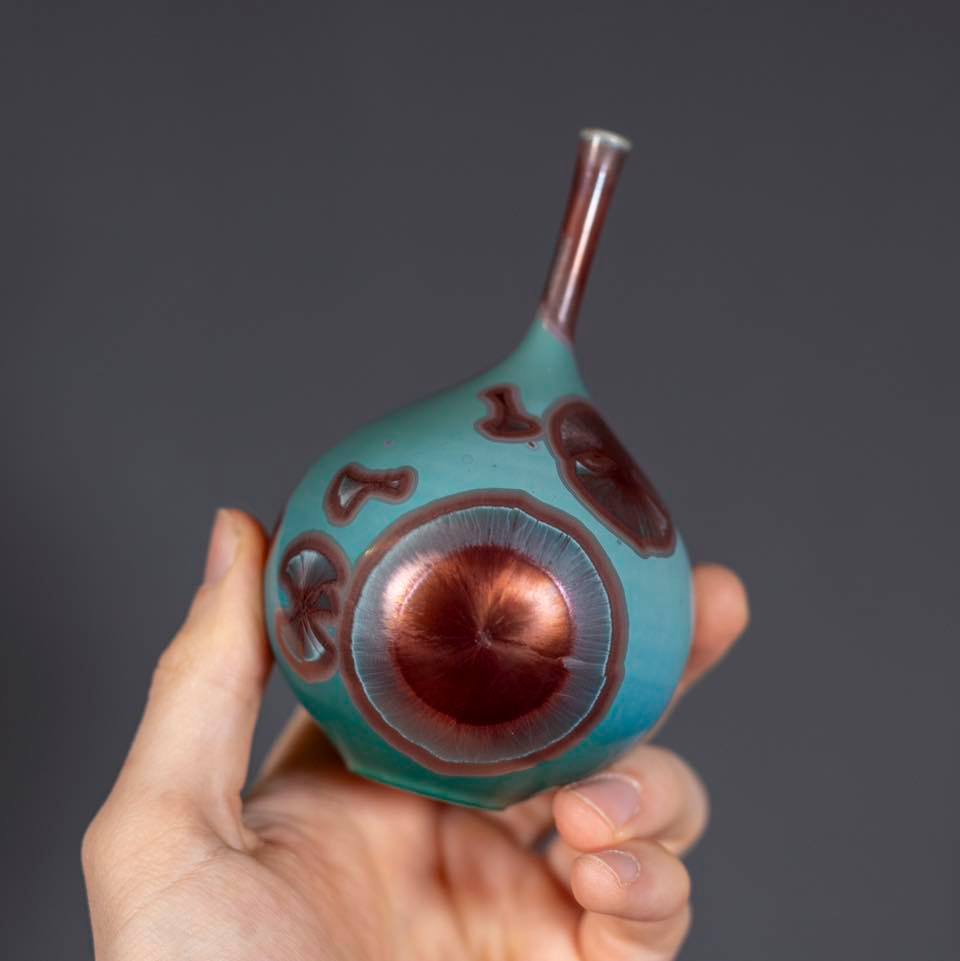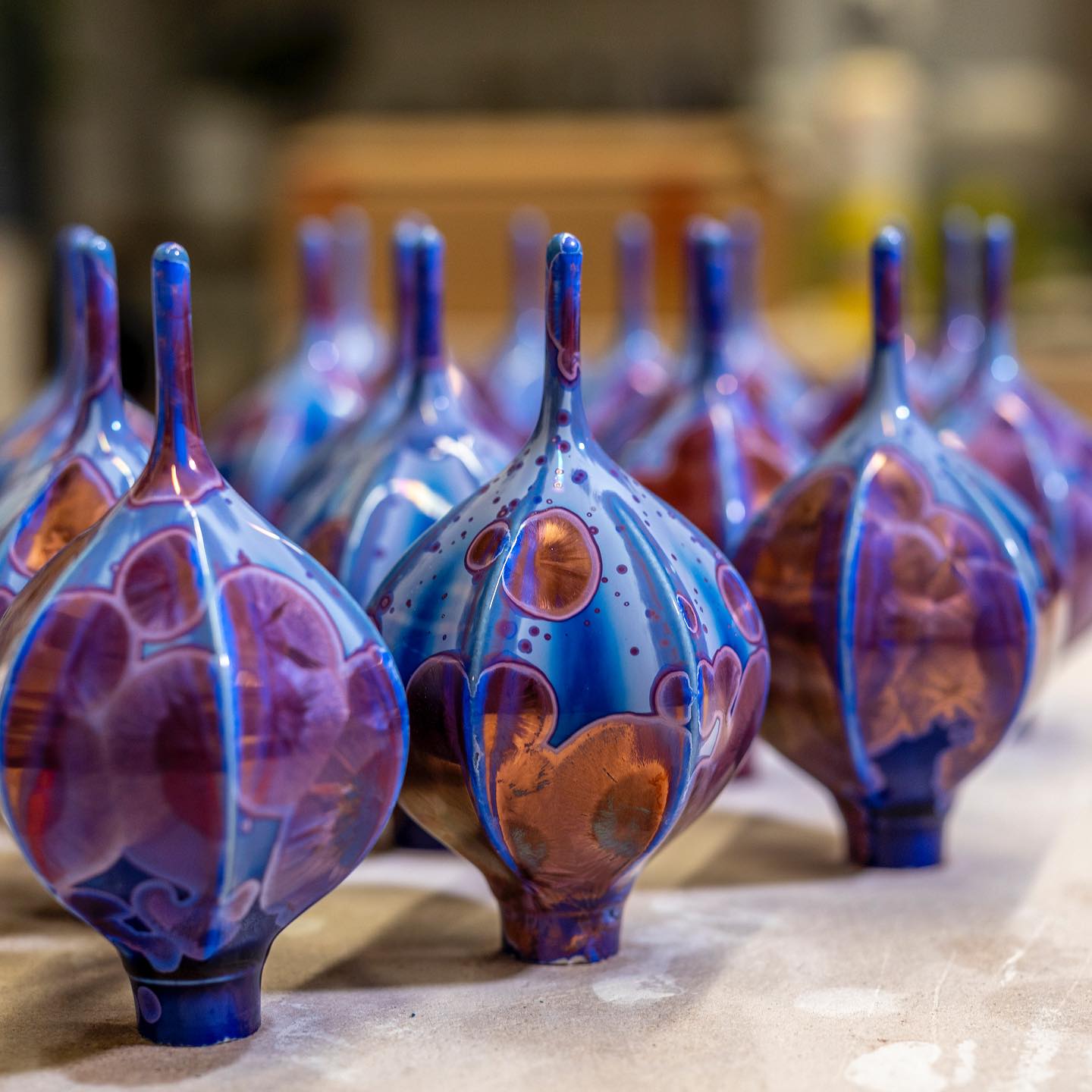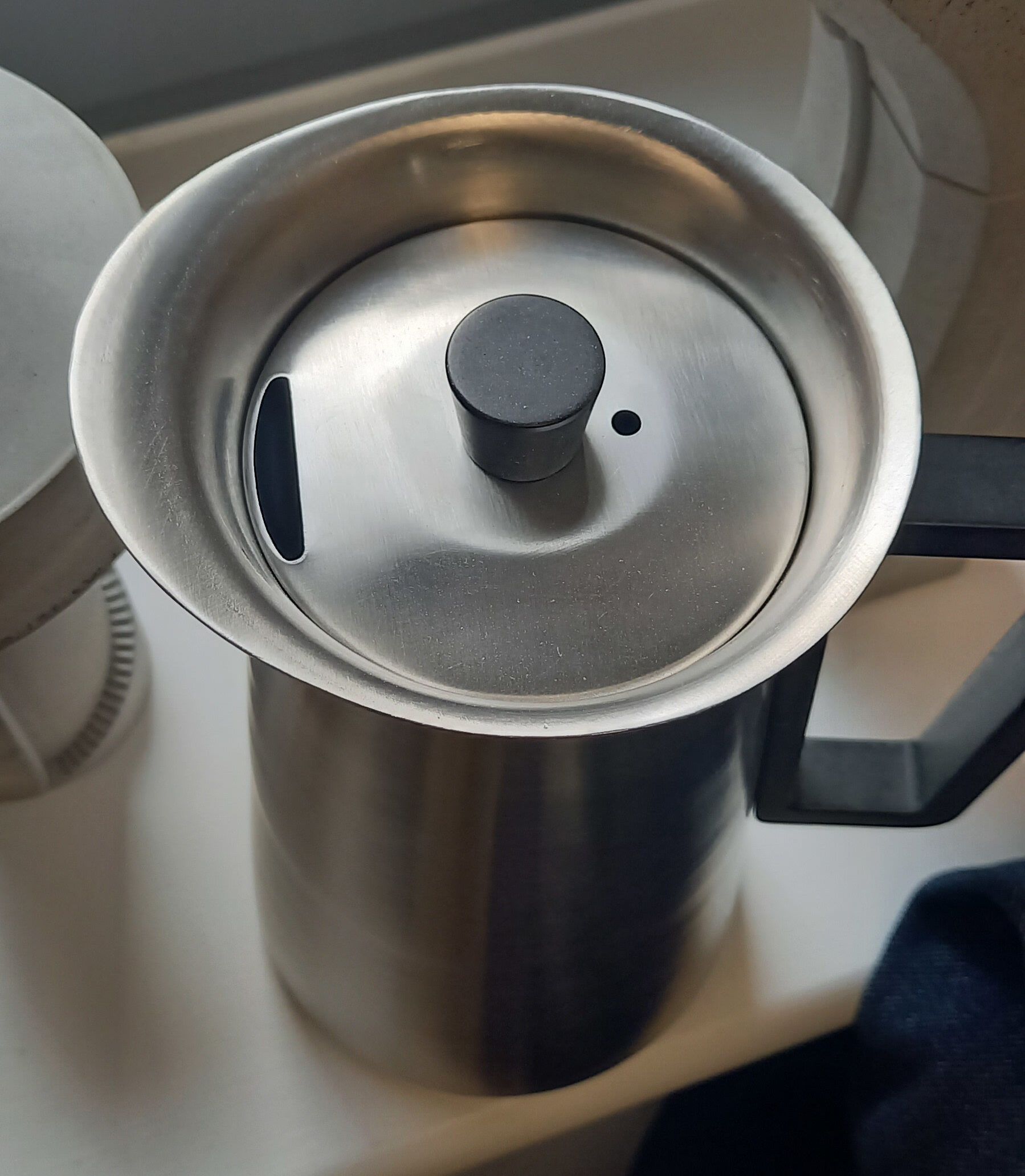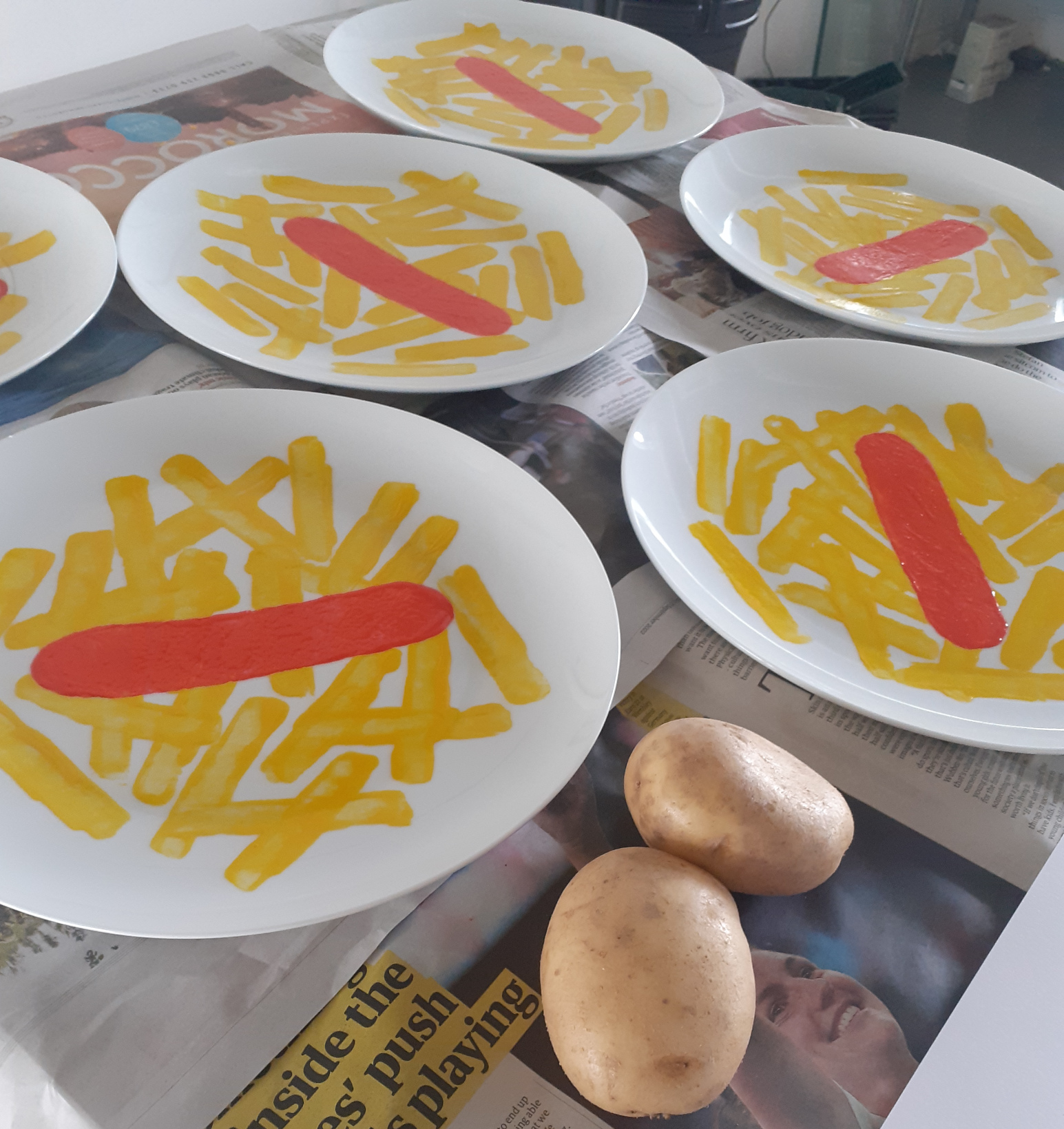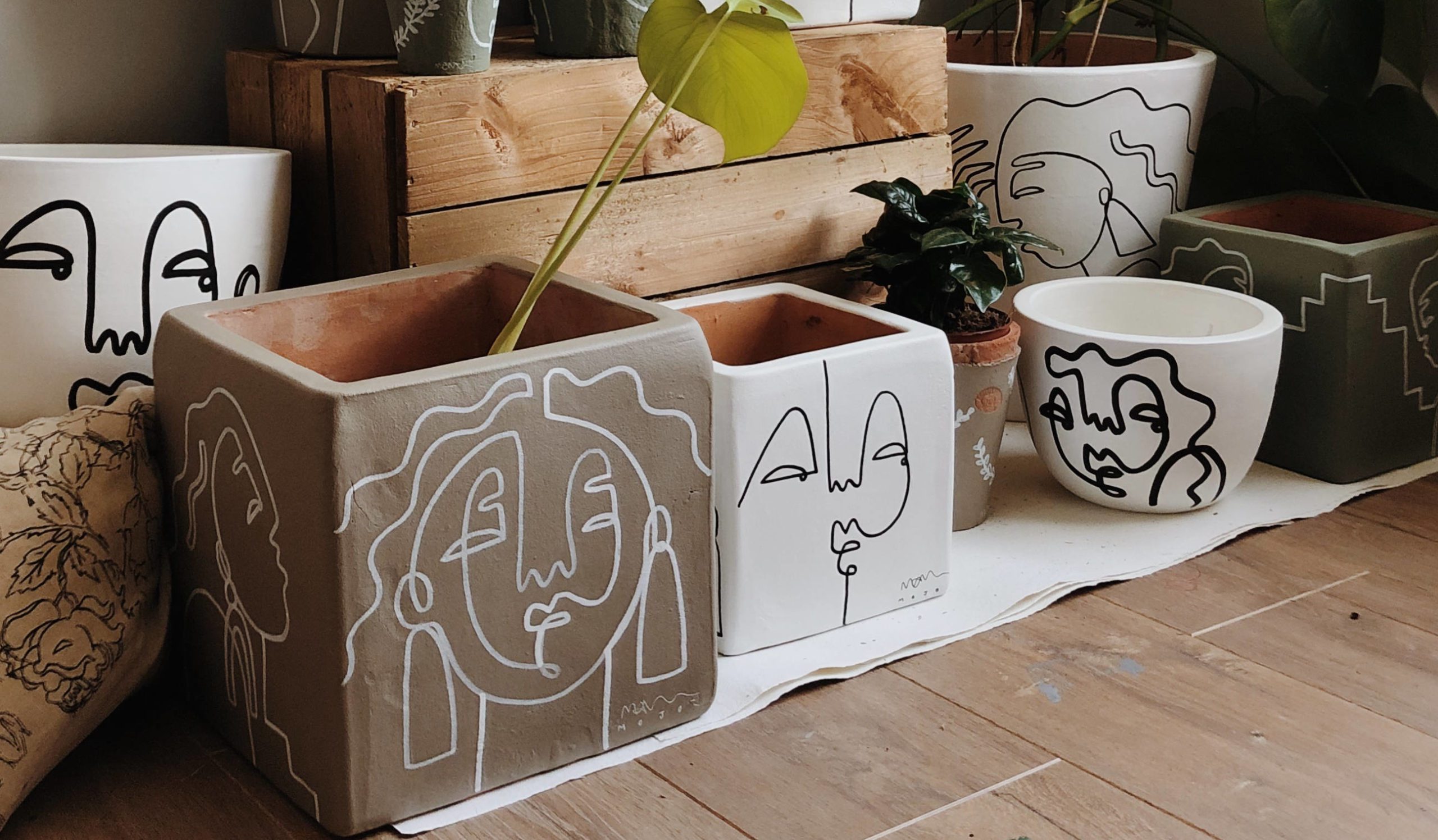Arts & Culture
matt horne – exquisite ceramics
Matt Horne is gifted with the skill and patience to make the most exquisite ceramics. With customers across the world, his artwork is in great demand. Working as a pottery teacher to support his business, when Covid forced in-person lessons to cease, he had to go it alone. Matt hasn’t looked back, just grown into larger studio space and gained more and more clients. He spoke to Folkelife about his life with ceramics.
“I started making ceramics at school and it was the one subject that I really enjoyed. To be able to make a career out of it is something special. When I was doing my A Levels I begged the guys at Aylesford Pottery to give me a job. I spent a number of years there getting better and better at throwing. But the thought of making just one type of mug, and endless numbers of them, wasn’t really me. It’s a bit boring! I wanted to do more one off stuff but needed to make it unique, and so discovered the crystaline glaze that I use.
“I started teaching in Adult Education at the beginning though. That was my regular work whilst I fitted in commissions and art fairs in between. There has to come a point though when you take the leap to doing your art full time. Covid was that time for me. It was a combination of not being able to teach face to face, having the time to spend working alone in my studio, and people buying more and more online.”
the wider audience
“I realised that my work was reaching a much wider audience; my Christmas baubles were taking off in the USA and Canada, and my vases were getting a lot of attention. After about 6 months I thought ‘well, I’ve survived this far, why not just forget about the teaching and see where this goes?’
“So I’ve moved into a studio in Hythe that has space for 3 kilns. I was sharing but my studio partner needed more space too so she’s moved next door. Having the three kilns means I can manage my time better, especially when it’s coming up to a show.”
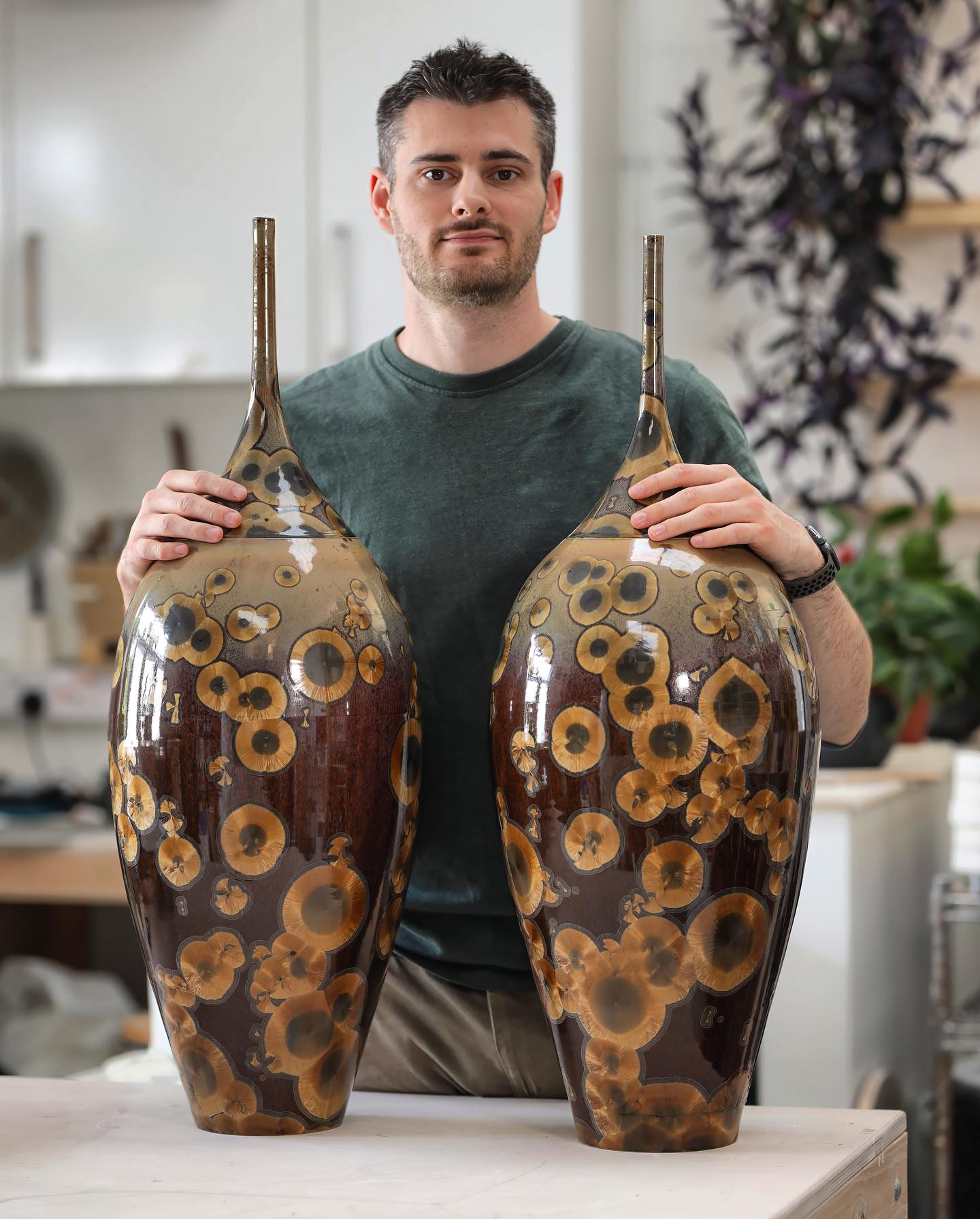
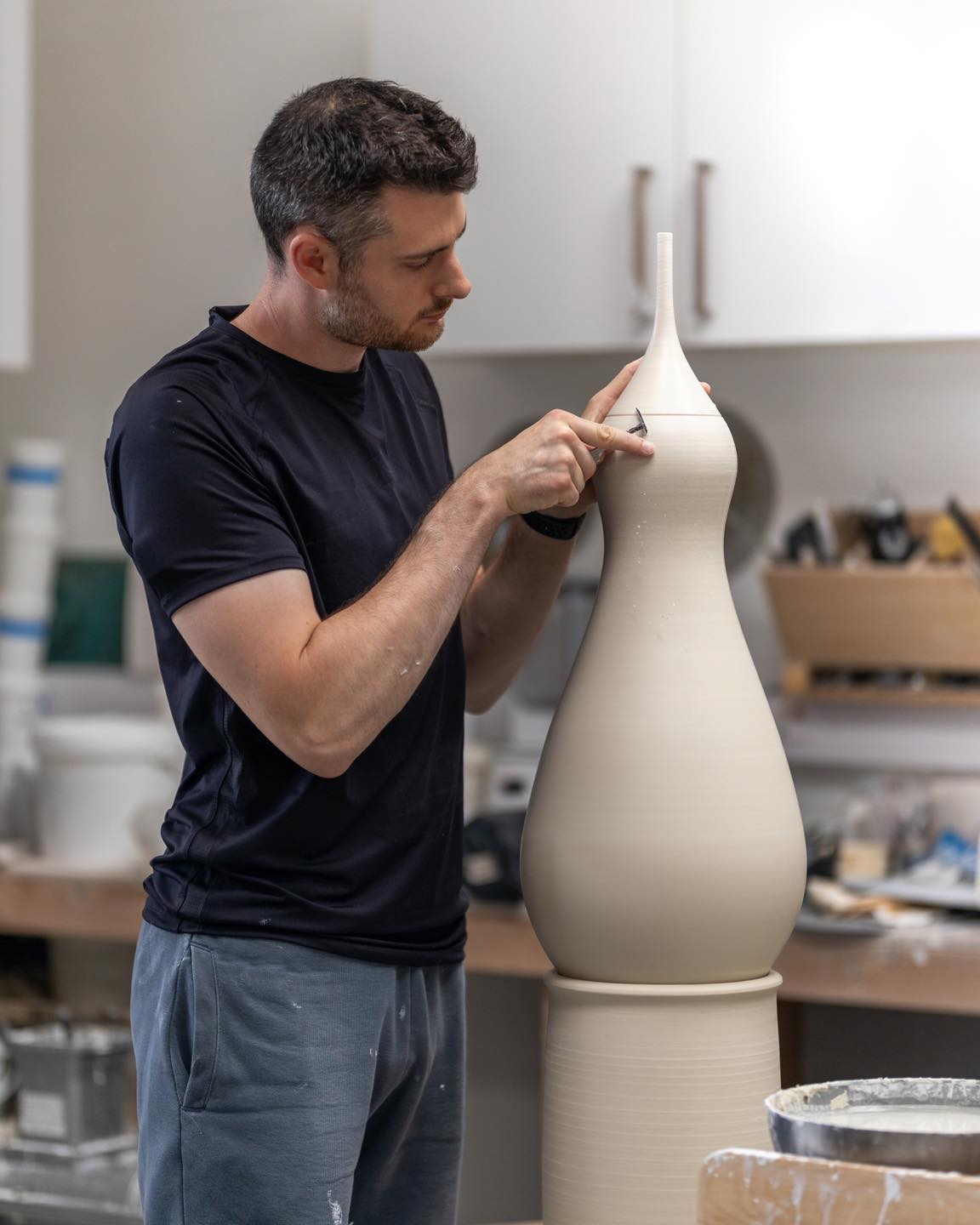
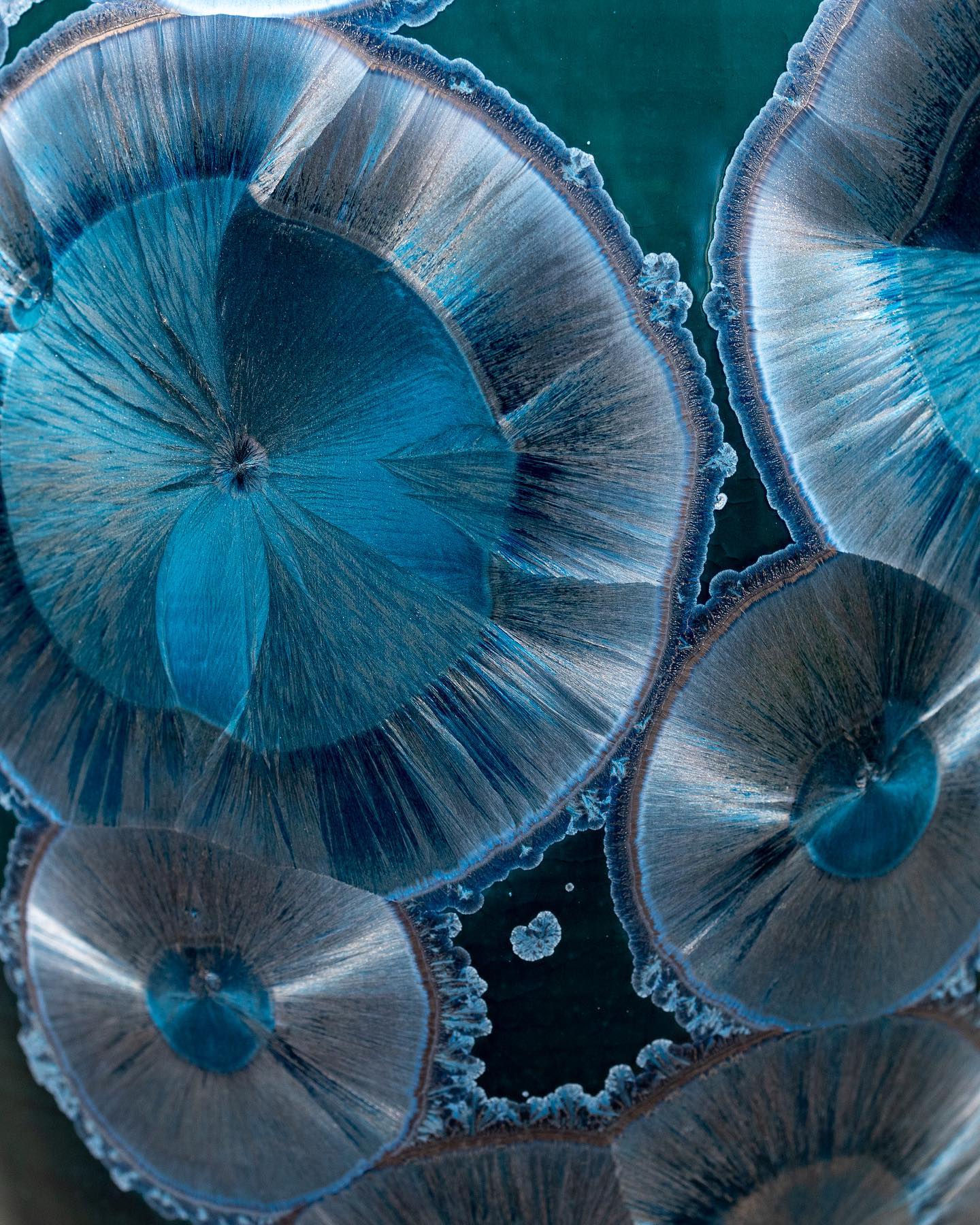
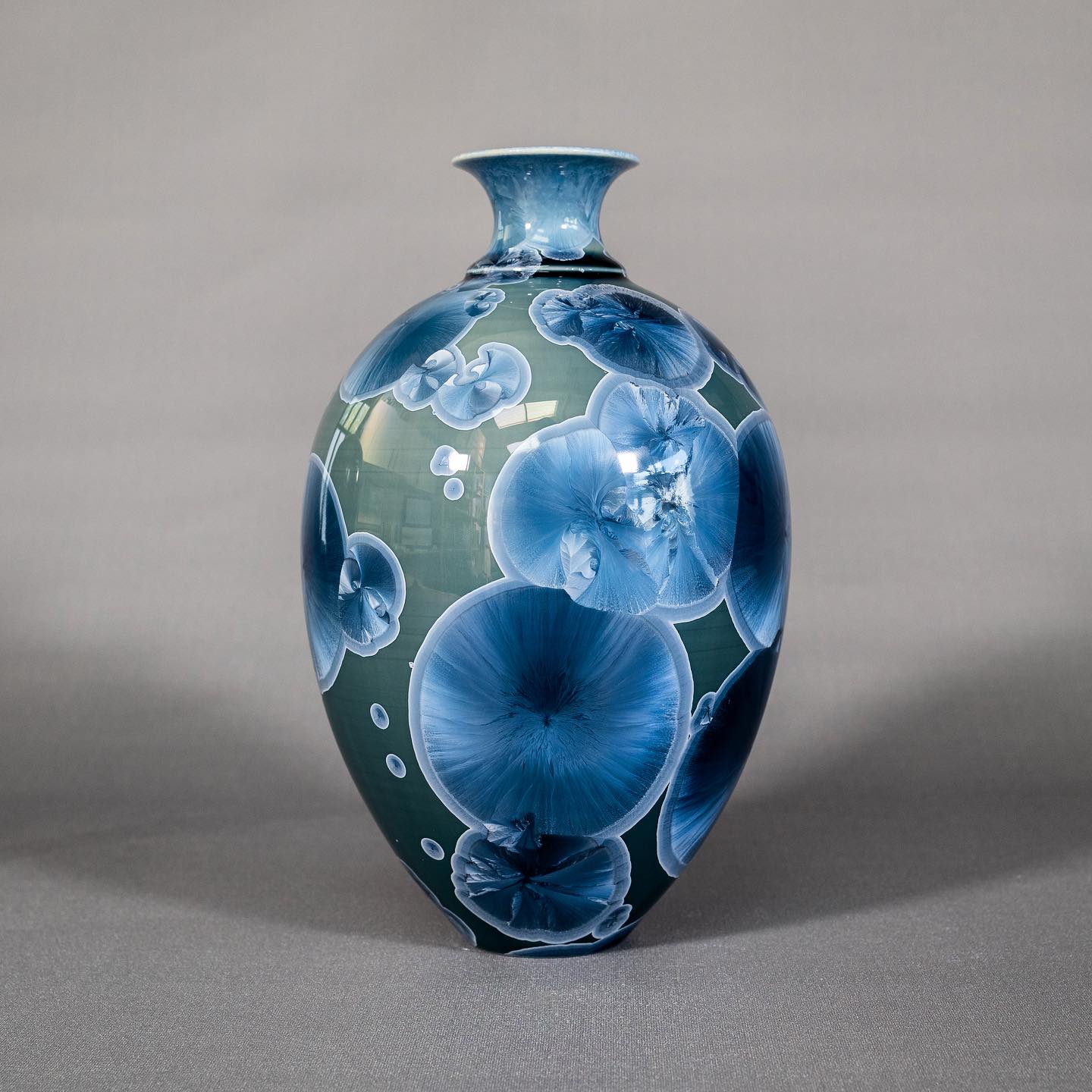
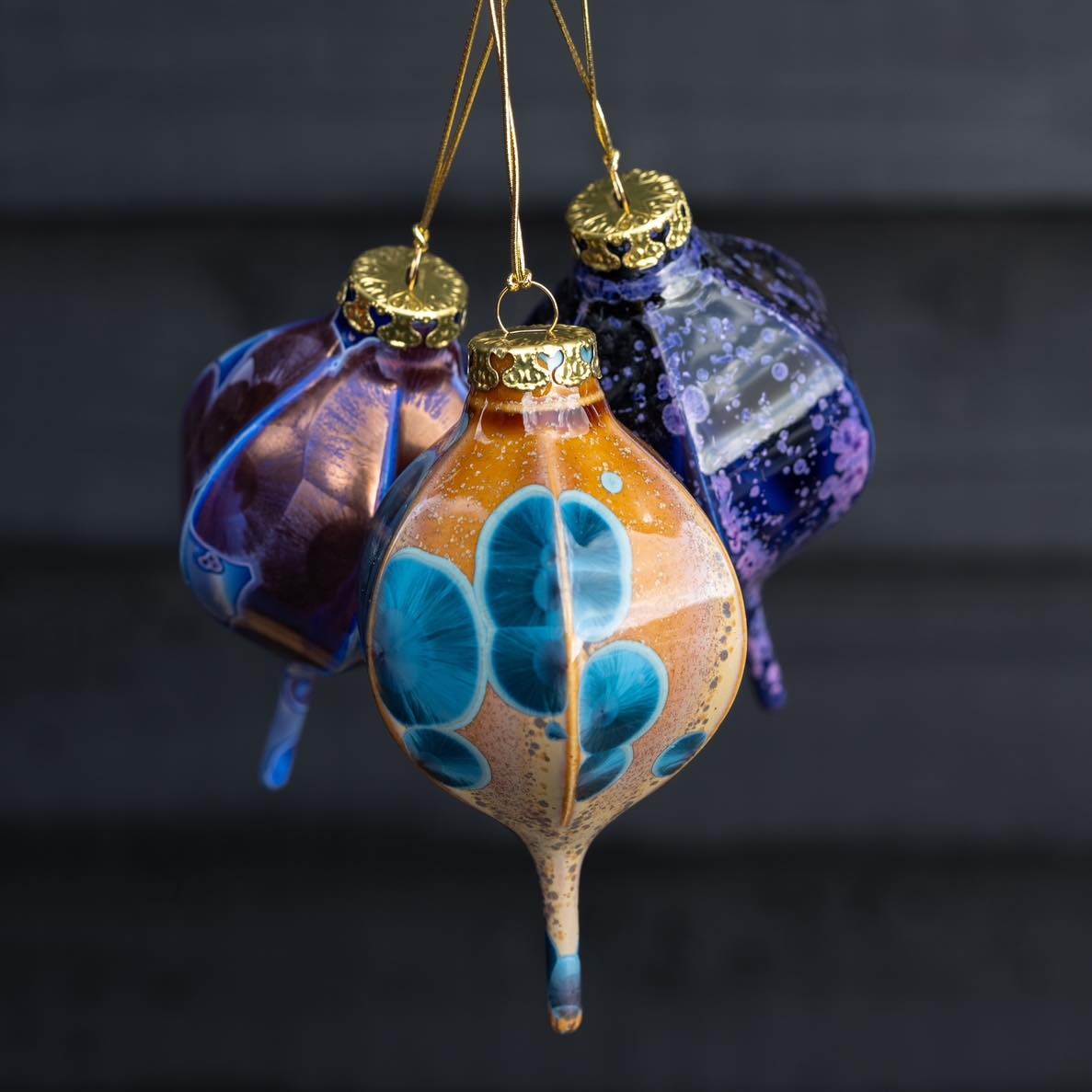
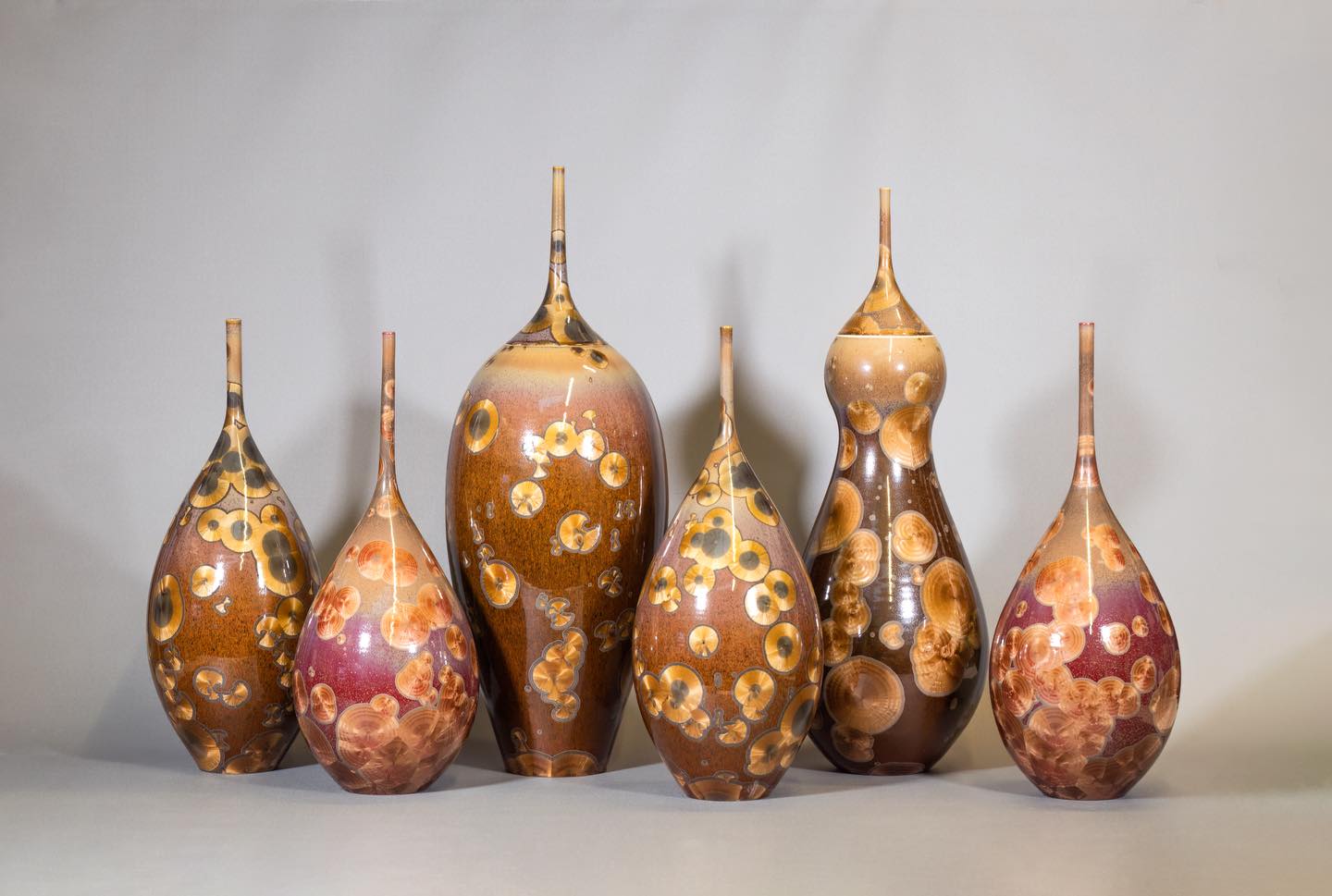
ceramics in progress
“The process of making ceramics is quite time-consuming. I throw in porcelain which is quite a tricky clay to use. It’s very fine and can collapse and fall in on itself when you are throwing. It also has a high slump and warp rate when you fire it – so you think you’ve made a straight pot but you’ll only find out after the first firing. That first firing is called the bisque fire. This is when you have turned your clay into ceramics. Then you glaze your pots, and re-fire at a higher temperature.
“I use crystaline glazes where zinc silicate crystals form in the glaze whey you fire the pot. I was looking on the internet at different finishes and saw this glaze. It’s completely organic and you really don’t know what you’re going to get until you take your pot out of the kiln. This glaze works really well on porcelain, so yes, I don’t make life easy for myself but the finished product is something I’m really proud of – when it goes well!”
glazes
“I glaze my pots and then they stand on a pedestal in the kiln. The glaze runs off during the firing process and these pedestals save my kiln – the glaze runs on to them. So when I remove my pots I have to separate them from the pedestals which is another difficult step in the process, and I could still lose my pot at this stage. After I’ve (successfully) removed my pot I then need to grind the edges until they’re smooth.
“I don’t know if I’m disorganised (that’s probably it) or it’s because I’m a creative person but I do tend to leave things to the last minute. It’s important for me to have as many new pots as possible for each show. To be fair, I don’t tend to come home with many as they do sell. It’s also good to have fresh stock at each show too. Anything that does come home go off to one of the galleries I sell in around the country.”
contemporary ceramics
“I sell in places like Contemporary Ceramics which is opposite the British Museum in London, Cambridge Contemporary and Fire and Flux in Norfolk. Then there’s the overseas market too. I think the glazes make each of my pots unique. You can’t tell how the crystals are going to grow or how many you will get. It depends on the temperature of the kiln and how long you keep it at that temperature. It’s quite an art to get them to grow and there were a lot of discards to begin with. And the temperature change is quite subtle, it could be a matter of 5 or 10 degrees that makes all the difference. It’s a very fussy glaze, but I love it!”
